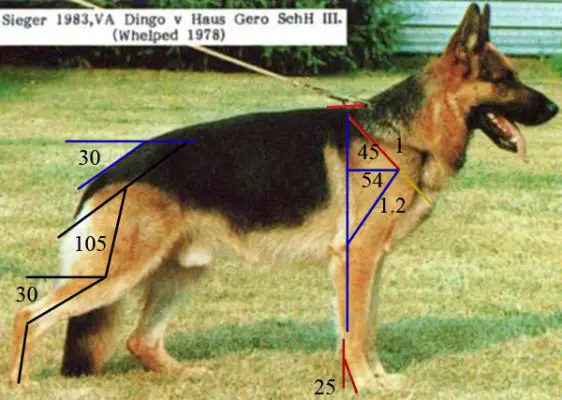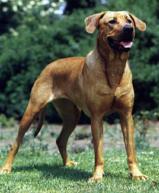
This is a placeholder text
Group text
by jc.carroll on 05 November 2011 - 13:11
SitasMom,
You don't need to breed for males or for females. Even in the same litter, I have started seeing a huge variance in size and structure between the male pups and the female pups. Sexual dimorphism is a trait that can be selected for. While it occurs naturally in mammals that the male is most typically the larger of the two, it can go to extremes, like in the California sea lion, where males can range between 400 - 2000lbs, but females only at 100 - 600lbs. Some breeders have a propensity for throwing masculine males in the same litter that throws feminine females.
I have been watching that with great fascination. I don't think the breeders are deliberately selecting sexual dimorphism as one of the traits they're shooting for; I think in a few cases it's just cropped up on it's own, and the breeders who work with closer linebreedings within their own lines stand a better chance of this trait becoming magnified. I can't help but wonder... If left unchecked, could you wind up with lines of GSD that produce very different type based solely on genetics of gender.
You don't need to breed for males or for females. Even in the same litter, I have started seeing a huge variance in size and structure between the male pups and the female pups. Sexual dimorphism is a trait that can be selected for. While it occurs naturally in mammals that the male is most typically the larger of the two, it can go to extremes, like in the California sea lion, where males can range between 400 - 2000lbs, but females only at 100 - 600lbs. Some breeders have a propensity for throwing masculine males in the same litter that throws feminine females.
I have been watching that with great fascination. I don't think the breeders are deliberately selecting sexual dimorphism as one of the traits they're shooting for; I think in a few cases it's just cropped up on it's own, and the breeders who work with closer linebreedings within their own lines stand a better chance of this trait becoming magnified. I can't help but wonder... If left unchecked, could you wind up with lines of GSD that produce very different type based solely on genetics of gender.
by shri on 05 November 2011 - 18:11
I am happy this discussion is becoming more informative.Let us discuss the virtues of certain lines as transmitters of good Hips,Firm straight backs,good ear carriage,good temperaments and drives etc .Thank you all please continue this discussion.
by GSDNewbie on 06 November 2011 - 00:11
The virtue I like right now is after several tries I finally have a dog sound in body and mind who also has a correct structure... three times the charm? lol The whole litter are all excellent as they mature.
by Abby Normal on 06 November 2011 - 14:11
So, here's a question...were Dingo's 'steep' upper arms more functional (and therefore more anatomically correct) than what the standard technically (and incorectly) calls for? Bearing in mind that it is believed from both pressure plate tests and research undertaken by the SV that more forward thrust is generated from the forehand (60%), and Dingo was, after all, the ultimate trotting machine. With his unexaggerated hind angulation he also demonstrated correct movement in front, wasting no energy on the high stepping gait that Pod mentions, which is the product of excessive hind angulation.
by shri on 06 November 2011 - 18:11
I think the answer for Dingo's fantastic movement lies in the length of upper arm and the very good placement of shoulder blades with correct balance of front and hind angulation.My personal opinion though difference of opinion will be appreciated.I guess there are many experts here on database to give their views.Regards.
by pod on 07 November 2011 - 09:11
Abby, where can I read more on the SV research and pressure plate tests? I know nothing about those.
by Ibrahim on 07 November 2011 - 19:11
Abby,
I would also love to see that study about the thrust.
I was always under the impression that Dingo's front upper arm is steep but it is not. The standard was tailored for Dingo, his only off standard was his croup which is short and steep, otherwise as per the standard he is more perfect than all the 2011 top 10, see below:


I would also love to see that study about the thrust.
I was always under the impression that Dingo's front upper arm is steep but it is not. The standard was tailored for Dingo, his only off standard was his croup which is short and steep, otherwise as per the standard he is more perfect than all the 2011 top 10, see below:


by Ibrahim on 07 November 2011 - 20:11
If ADMINISTRATION does not object I can do the angles of Ober von Bad boll for comparison.
Ibrahim
Ibrahim
by Ibrahim on 07 November 2011 - 20:11
Mr. Louis Donald in (A Discussion Paper on the Structure
of the German Shepherd Dog) explains the correct way to measure shoulder angles:
Showing the various ways the length and angle of the shoulder blade and upper arm can be determined The dotted line represents how most judges assess the shoulder blade and upper arm whilst the solid line represents how it should be determined
The general response you would get from most people when asked how they actually determine by sight or feel the angle of the shoulder blade would be for them to say it’s the line that runs through the centre of the scapula, solid line A C, but contrary to what they may think, this is not what they are actually determining the angle from! What they are working on isn’t a line through the centre of the scapula but a line that starts in the centre of the scapula at it’s top, at the withers, but at the bottom where it joins the upperarm they have moved away from the scapula’s centre line, its spine and they are now on a line that has been set by the outer point of the humerus dotted line A B. This is the point they actually see and or touch. This gives the illusion of more lay back of the shoulder blade than actually exists and is part of the problem when people both assess and talk about length and angles of bones in general. Dr Gorrieri did believe that the shoulder blade should approximate 45 degrees but he did not accept the traditional view that is still generally expounded that the shoulder blade and the upperarm should both be 45 degrees to the horizontal and equal in length. If you assess the shoulder blade and the upperarm by sight as described earlier then they may appear to be at 45 degrees and 90 degrees to themselves and equal in length but if you measure them correctly, as a clinician would do as can be seen in Figure 19 in the solid lines they are not equal and the upperarm is not at 45 degrees but 53degrees.
It is necessary for the reader to accept that the way to measure and calculate degrees in the upperarm is as I have shown it in the solid line and as such comparison to the length of the shoulder blade should be done this way too.
Showing the various ways the length and angle of the shoulder blade and upper arm can be determined The dotted line represents how most judges assess the shoulder blade and upper arm whilst the solid line represents how it should be determined

The general response you would get from most people when asked how they actually determine by sight or feel the angle of the shoulder blade would be for them to say it’s the line that runs through the centre of the scapula, solid line A C, but contrary to what they may think, this is not what they are actually determining the angle from! What they are working on isn’t a line through the centre of the scapula but a line that starts in the centre of the scapula at it’s top, at the withers, but at the bottom where it joins the upperarm they have moved away from the scapula’s centre line, its spine and they are now on a line that has been set by the outer point of the humerus dotted line A B. This is the point they actually see and or touch. This gives the illusion of more lay back of the shoulder blade than actually exists and is part of the problem when people both assess and talk about length and angles of bones in general. Dr Gorrieri did believe that the shoulder blade should approximate 45 degrees but he did not accept the traditional view that is still generally expounded that the shoulder blade and the upperarm should both be 45 degrees to the horizontal and equal in length. If you assess the shoulder blade and the upperarm by sight as described earlier then they may appear to be at 45 degrees and 90 degrees to themselves and equal in length but if you measure them correctly, as a clinician would do as can be seen in Figure 19 in the solid lines they are not equal and the upperarm is not at 45 degrees but 53degrees.
It is necessary for the reader to accept that the way to measure and calculate degrees in the upperarm is as I have shown it in the solid line and as such comparison to the length of the shoulder blade should be done this way too.
by shri on 07 November 2011 - 20:11
Thank you Mr Ibrahim for the vivid illustrations.This further strengthens my view for the fantastic movement ie the length of upperarm and very nicely placed shoulder blades.As you have shown in the illustration of front angles, the lower part of the fulcrum (the upper arm-humerus)is slightly longer and not equal to the shoulder blade.Thank you for sharing the views.Regards.
Contact information Disclaimer Privacy Statement Copyright Information Terms of Service Cookie policy ↑ Back to top




